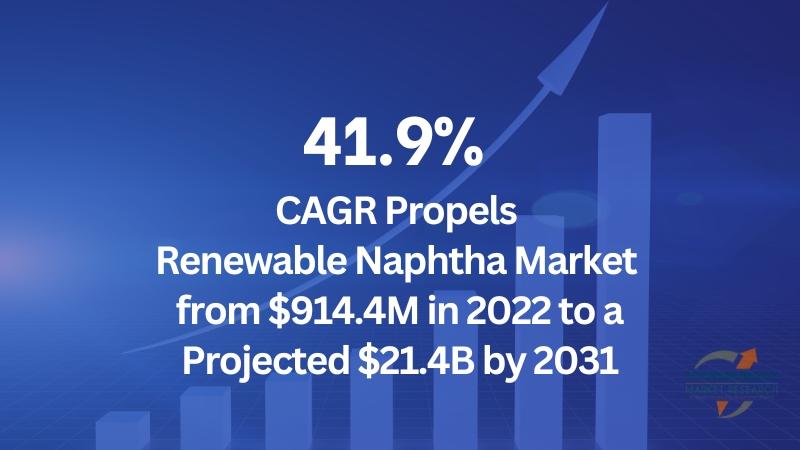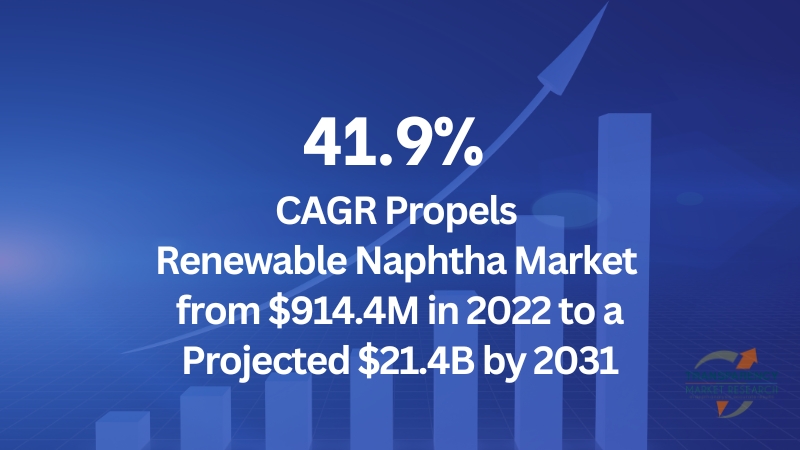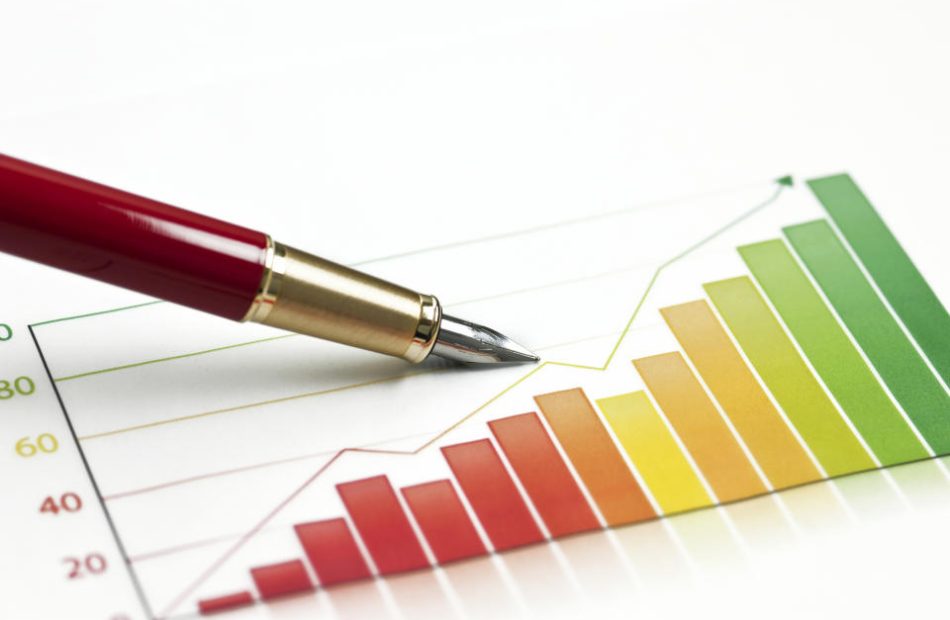How US Elections Could Impact US Dollar: Goldman Sachs Expects Greenback Will Remain 'Stronger For Longer'
As the 2024 U.S. presidential election approaches, financial markets are bracing for its potential impact on the U.S. dollar.
Past elections have triggered periods of dollar depreciation. This time, Michael Cahill, foreign exchange strategist at Goldman Sachs, explains the risks now point toward continued dollar strength in most scenarios, whether the election outcome favors Vice President Kamala Harris or Ex-President Donald Trump.
Republican Sweep
Cahill explains that a Republican sweep provides “the widest potential for broad tariff changes.”
Goldman Sachs’ China economics team estimates that a 60% tariff on all U.S. imports of Chinese goods, for example, would raise about $250 billion in revenue. They also estimate that a “10% across-the-board tariff, in addition to higher tariffs on China,” could widen rate differentials between the United States and Europe, leading to an 8-10% depreciation of the euro against the dollar.
According to Cahill, those higher tariffs — especially on Chinese goods — could shift the terms of trade in favor of the dollar, driving it higher. Higher tariffs would raise the cost of imports, cut demand for foreign goods and potentially benefit domestic producers who raise prices.
The expert added that “the Republican platform has proposed using revenue from a baseline tariff to cut domestic taxes,” which would they say will stimulate domestic spending and support the dollar.
Economists generally disagree. Higher U.S. tariffs, they say, may reduce demand for foreign goods, but they also hurt U.S. consumers by raising living costs by about 3 to 4%. This disproportionately affects middle- and lower-income families and does not boost American manufacturing or reduce the trade deficit. It could also harm the economy by increasing global poverty and creating market fragmentation
Read Also: US Economy Eyes 3.4% Growth In Q3: Is Soft Landing Turning Into Reacceleration?
And If Trump Wins But Congress Is Divided?
A scenario where Trump wins with a split Congress could still lead to dollar strength, albeit to a lesser degree, according to Goldman Sachs’ Cahill.
Some tariffs could be raised by executive action alone, but a lack of unified Congressional support might limit the scope of policy changes.
Cahill expects “a narrower, smaller Dollar rally in response to a divided Republican government outcome.
How Would A Harris Victory Impact the Dollar?
If Harris wins the election, Cahill predicts this “would result in some initial Dollar downside.” Markets will likely adjust to the prospect of looser trade policies and potential tariff reductions.
Such a scenario would hold in both a Democratic sweep or divided Democratic government, according to Cahill.
However, the expert highlights that any major dollar weakness could be short-lived as markets would quickly refocus on broader economic conditions, including U.S. growth differentials with the rest of the world, which still favor the dollar.
Could Global Growth Challenge The Dollar?
While U.S. election outcomes are crucial, global growth prospects could counterbalance the dollar’s strength. Cahill points out that stronger-than-expected growth in China or Europe could drive investment away from U.S. assets, putting downward pressure on the dollar.
This occurred in 2017 and 2021, when global growth optimism led to dollar depreciation despite U.S. elections.
Tariffs are one of the key channels through which political outcomes will affect currency markets. Historical examples of tariffs show that the dollar strengthened by about 0.7% against the Chinese yuan for each $10 billion in implied tariff revenue.
A Stronger For Longer Greenback?
Bottom line, Goldman Sachs forecasts that the risks favor continued dollar strength, especially under a Republican-led government.
“With mounting evidence that ‘US exceptionalism’ is still very much intact, we still think the risks are in favor of the Dollar being stronger for longer,” Cahill wrote.
Keep Reading:
Image: Unsplash
Market News and Data brought to you by Benzinga APIs
© 2024 Benzinga.com. Benzinga does not provide investment advice. All rights reserved.
Ask an Advisor: I Withdrew $60k from My Retirement Plan This Year Which Increased My Medicare Premiums. Is It Permanent?
I’m 71 years old and my current Thrift Savings Plan (TSP) balance is $315,000 after withdrawing $60,000 this year. This is putting me in a higher tax bracket and I must pay a large amount of federal/state taxes. In addition, my monthly Medicare premium will increase. Will the Medicare premium increase permanently or only the year of withdrawal? Is it too late to develop a strategy to reduce taxes? I don’t need the money right now. What should my withdrawal strategy be?
– Joyce
I’m sorry to hear about the tax surprise, Joyce. While those are never fun, there is still time to take certain actions to reduce your tax burden. That’s not necessarily going to help you with your Medicare premiums, but any potential increase in premium is not permanent.
Let’s break this down so you can see if there’s a way to adjust your withdrawal strategy to potentially reduce both your taxes and Medicare premiums. (And if you need additional guidance related to your retirement income plan, tax strategy or investment portfolio, consider speaking with a financial advisor.)
What Is IRMAA?
Most people receive Medicare Part A without paying a monthly premium. There are premiums for Parts B and D, though. If your income exceeds certain limits you may have to pay an additional surcharge known as an income-related monthly adjustment amount (IRMAA).
For 2024, IRMAA starts at incomes above $103,000 for single filers and $206,000 for couples. IRMAA can increase your Medicare Part B premiums to as much as $594 per month in 2024, depending on your income.
However, your IRMAA premium each year is based on your income from two years prior. So your IRMAA (if any) for 2024 is based on your income from 2022. As a result, the government will use your 2024 income to calculate your IRMAA adjustment in 2026.
Additionally, that will be determined based on the IRMAA brackets for 2024, which will be adjusted for inflation and announced in the last few months of 2025 or early 2026. It may seem odd, but exceeding the 2024 IRMAA income limits doesn’t necessarily mean you’ll ever pay IRMAA. If your income is just barely over the IRMAA threshold this year, inflation may push the limit higher by 2026 and leave you unaffected by the surcharge.
(But if you need additional help planning for IRMAA or managing your retirement income, consider working with a financial advisor.)
Different Measures of Income
SmartAsset and Yahoo Finance LLC may earn commission or revenue through links in the content below.
I also think it’s important to point out that there are different measures of income when it comes to determining what you pay in taxes and whether you must pay more for Medicare. Your taxable income largely determines what you owe in taxes, while your modified adjusted gross income (MAGI) determines what you pay for Medicare.
You can see how this all works by looking at a Form 1040 – the Individual Income Tax Return. Lines 1a through 15 on Form 1040 help you calculate your taxable income by starting with your total income, which includes wages, dividends, capital gains and other earnings. From there, you subtract “adjustments to income” (from Schedule 1, line 26), including contributions to retirement accounts and student loan interest. The resulting figure is your adjusted gross income (AGI).
Next, you subtract either the standard deduction or itemized deductions, along with any qualified business income deduction, to determine your taxable income. This final amount is what is used to calculate the taxes you owe for the year.
So, to put it in the simplest terms:
From there, the next section of Form 1040 is labeled “Taxes and Credits” and lines 16-24 walk you through calculating your actual tax liability. (A financial advisor with tax expertise can be a valuable resource as you plan for taxes and look for efficiencies.)
What About “Modified” AGI (MAGI)?
But IRMAA is based on your MAGI, and you’ll notice there is no line labeled “MAGI” on Form 1040. In fact, there is no universal formula for calculating it. Instead, there are over a dozen ways to calculate MAGI depending on the reason you need it, and each purpose has its own prescribed calculation.
For IRMAA purposes, MAGI is your combined AGI and tax exempt interest. If you have no tax-exempt interest, your MAGI is the same as your AGI.
Since IRMAA is tied to MAGI, tax deductions (recorded after line 11) will not impact whether you’re subject to higher Medicare premiums. You need to look above line 11 to find ways of reducing your AGI, and in turn, your IRMAA. However, there’s plenty of stuff that is recorded below line 11 that can reduce your tax bill.
Look at these items with your tax professional to see which options are viable for you. Not all of them will apply or make sense for you to do. I suggest calling them sooner rather than later as some of these options have a calendar year deadline, not a tax filing deadline. (And if you’re interested in getting financial advice, consider working with financial advisor with tax expertise.)
Distributions Going Forward
It’s interesting that you withdrew $60,000 although you say you don’t need the money. Going forward I’d suggest mapping out your distribution plan in consideration of income needs, taxes, and IRMAA to be the most efficient.
Don’t forget to factor in required minimum distributions (RMDs) once you turn 73. If you’re charitably inclined, QCDs allow you to distribute those without including them in your income at all. Just keep in mind that QCDs can only be made from IRAs. To incorporate them into your withdrawal strategy, you would first have to roll the funds into an IRA.
(If you need help creating a tax-efficient withdrawal strategy, use this free tool to connect with a fiduciary financial advisor.)
Bottom Line
Your withdrawal this year won’t trigger IRMAA next year because there’s a two-year delay. You can reduce your tax bill by either reducing your income or making use of available deductions and credits. To reduce or eliminate IRMAA, you need to keep your MAGI under IRMAA threshold amounts.
Tips for Retirement Income Planning
-
You may want to consider converting portions of tax-deferred accounts to Roth IRAs in your early retirement years before required minimum distributions (RMDs) begin at age 73 (75 for people more in 1960 or later). This strategy can lower future RMDs and reduce taxable income later in retirement.
-
While retirement income planning can be complicated, a financial advisor can help you build a plan based on your assets and income needs. Finding a financial advisor doesn’t have to be hard. SmartAsset’s free tool matches you with up to three vetted financial advisors who serve your area, and you can have a free introductory call with your advisor matches to decide which one you feel is right for you. If you’re ready to find an advisor who can help you achieve your financial goals, get started now.
-
Keep an emergency fund on hand in case you run into unexpected expenses. An emergency fund should be liquid — in an account that isn’t at risk of significant fluctuation like the stock market. The tradeoff is that the value of liquid cash can be eroded by inflation. But a high-interest account allows you to earn compound interest. Compare savings accounts from these banks.
-
Are you a financial advisor looking to grow your business? SmartAsset AMP helps advisors connect with leads and offers marketing automation solutions so you can spend more time making conversions. Learn more about SmartAsset AMP.
Brandon Renfro, CFP®, is a SmartAsset financial planning columnist and answers reader questions on personal finance and tax topics. Got a question you’d like answered? Email AskAnAdvisor@smartasset.com and your question may be answered in a future column.
Please note that Brandon is not an employee of SmartAsset and is not a participant in SmartAsset AMP. He has been compensated for this article. Some reader-submitted questions are edited for clarity or brevity.
Photo credit: ©iStock.com/LPETTET, ©iStock.com/Moyo Studio
The post Ask an Advisor: I Withdrew $60k from My Retirement Plan This Year Which Increased My Medicare Premiums. Is It Permanent? appeared first on SmartReads by SmartAsset.
GE Aerospace Tops Q3 Estimates, Raises Profit Outlook
Jonathan Brady / PA Images / Getty Images
GE Aerospace (GE) fell 7% Tuesday morning as revenue in its commercial engines and services division fell short of analysts’ expectations, even though its overall revenue and profit beat estimates.
The engine and aerospace parts manufacturer posted $9.84 billion in total revenue, while analysts polled by Visible Alpha had a consensus estimate of $9.55 billion. Net income was $1.89 billion, or $1.56 per share, compared with the projected $1.28 billion and $1.19.
However, GE Aerospace’s commercial engines and services revenue came in at $7.00 billion, below the $7.13 billion expectation. Revenue in the smaller defense and propulsion segment of $2.24 billion also missed estimates of $2.34 billion.
The company lifted its profit projections for full-year 2024, guiding adjusted earnings per share (EPS) to a range of $4.20 to $4.35, up from $3.95 to $4.20 previously.
“The GE Aerospace team delivered strong results, with demand driving orders up 28%,” Chief Executive Officer (CEO) Larry Culp said. “We grew earnings 25% and produced substantial free cash flow, both largely driven by services. Given the strength of our results and 4Q expectations, we’re raising our earnings and cash guidance for the year.”
Impact of the Boeing Machinists Union Strike
In the weeks leading up to GE Aerospace’s report, Bernstein analysts said the company faced a “key question”—the impact the Boeing (BA) machinists union strike would have on its operations. Slower production of Boeing planes would mean poorer engine sales, but would also improve the maintenance aftermarket for its existing engines.
GE Aerospace didn’t mention any impacts of the five-week Boeing strike in its earnings release, which could end soon after the sides came to a tentative agreement over the weekend that the union’s members are set to vote on Wednesday.
Analysts are the most bullish on GE Aerospace stock of the former General Electric segments, with all eight of the analysts tracked by Visible Alpha maintaining a “buy” rating, compared to 11 of 13 for GE Vernova and six of 11 for GE HealthCare (GEHC). GE Aerospace also has a larger projected gain, with its average target price about 9% above its current levels, compared to just over 3% for GE Vernova and GE HealthCare.
Despite today’s decline, GE Aerospace shares still are up about 30% since the early April split from GE Vernova (GEV).
UPDATE—This story has been updated with the latest share price and information about segment revenue.
Read the original article on Investopedia.
Brad Garlinghouse Defends Ripple Co-Founder's Donation To Kamala Harris While Top Crypto Analyst Throws XRP 'Securities' Jibe
Brad Garlinghouse, the CEO of Ripple Labs, underscored the significance of engaging with candidates promoting pro-cryptocurrency policies, irrespective of political affiliations.
What Happened: Responding to an X post by the co-founder of the company, Chris Larsen, who announced donating $10 million in XRP XRP/USD for Kamala Harris‘ campaign, Garlinghouse said he respected everyone’s right to support candidates they liked.
“Ripple will continue to engage with both Democrats and Republicans in the final days of the campaigns (and after the election) to promote pro-crypto policies,” Garlinghouse stated, emphasizing the need for bipartisan backing to policies supporting innovation in the industry.
“We need to immediately change course from this administration’s misguided war on cryptocurrency,” he added.
Meanwhile, influential cryptocurrency analyst Ali Martinez poked fun at Chris Larsen’s continued financial support for Harris, saying, “May be XRP and XLM should be deemed securities after all!”
The cheeky remark was aimed at the ongoing legal battle between Ripple and SEC over the security status of XRP.
See Also: Mark Cuban Dismisses Polymarket Election Odds As Meaningless: ‘Most Of The Money Is Foreign’
Why It Matters: Larsen made three separate donations in September to Future Forward, the Super PAC backing Harris, totaling close to $10 million. This was on top of an earlier contribution of $1 million in XRP to the same PAC in August.
Interestingly, Ripple legal chief Stuart Alderoty donated $300,000 in XRP to a Donald Trump-supporting PAC called Trump 47 PAC, according to a recent filing with the Federal Election Commission.
The cryptocurrency industry has become a significant player in the 2024 U.S. election cycle. Crypto-linked political action committees (PACs) have contributed nearly $130 million to both Republican and Democratic candidates, focusing on key congressional races, according to CNBC.
Did You Know?
Market News and Data brought to you by Benzinga APIs
© 2024 Benzinga.com. Benzinga does not provide investment advice. All rights reserved.
Renewable Naphtha Market to Reach USD 21.4 billion, Advancing at a CAGR of 41.9% by 2031: Transparency Market Research Inc.
Wilmington, Delaware, United States, Transparency Market Research Inc. -, Oct. 22, 2024 (GLOBE NEWSWIRE) — The global renewable naphtha market (재생 가능한 나프타 시장) is estimated to flourish at a CAGR of 41.9% from 2023 to 2031. Transparency Market Research projects that the overall sales revenue for renewable naphtha is estimated to reach US$ 21.4 billion by the end of 2031.
A prominent factor is the growing focus on circular economy principles. Companies are increasingly adopting strategies to optimize resource use and minimize waste generation. Renewable naphtha, derived from organic feedstocks or waste streams, aligns with these objectives, offering a sustainable alternative to conventional naphtha production methods.
Advancements in biorefinery integration and process optimization are enhancing the efficiency and cost-effectiveness of renewable naphtha production. Integrated biorefinery complexes that co-produce renewable naphtha alongside other valuable bioproducts maximize resource utilization and economic viability.
Download Sample Copy of the Report:
https://www.transparencymarketresearch.com/sample/sample.php?flag=S&rep_id=78850

Emerging applications for renewable naphtha beyond traditional fuel blending are driving market growth. For instance, the utilization of renewable naphtha in the production of bio-based plastics, resins, and specialty chemicals offers opportunities for value-added product diversification and market expansion.
Renewable Naphtha Market: Competitive Landscape
The competitive landscape of the renewable naphtha market is characterized by a mix of established players and emerging innovators striving to capitalize on the growing demand for sustainable fuel alternatives. Key market participants such as Neste, TotalEnergies, and UPM Biofuels dominate with their extensive production capacities and diversified product portfolios.
Smaller players like Gevo and Avantium are leveraging their technological expertise to carve out niche markets. Collaboration and strategic partnerships between industry leaders and technology startups are driving innovation and market expansion.
Regulatory support and increasing consumer preference for eco-friendly solutions further intensify competition, fostering continuous growth and evolution in the sector. Some prominent players are as follows:
- UPM Biofuels
- Neste
- Renewable Energy Group
- Borealis AG
- Eni
- BASF
- Dow
- St1
- TotalEnergies
- Rapsol
- Sunshine Biofuels
Product Portfolio
- TotalEnergies offers a comprehensive product portfolio spanning conventional and renewable energy solutions, including biofuels, solar power, and sustainable mobility options. Their commitment to innovation and sustainability drives the development of cutting-edge technologies to meet the world’s evolving energy needs efficiently and responsibly.
- Rapsol specializes in advanced biofuels derived from sustainable sources, providing eco-friendly alternatives to traditional fossil fuels. With a focus on quality, reliability, and environmental stewardship, Rapsol delivers innovative solutions to reduce carbon emissions and promote a cleaner energy future.
- Sunshine Biofuels pioneers the production and distribution of renewable fuels derived from organic waste streams, offering cost-effective and sustainable energy solutions. Through advanced conversion technologies and strategic partnerships, Sunshine Biofuels aims to mitigate environmental impacts while contributing to the transition towards a circular economy.
Key Findings of the Market Report
- Heavy naphtha emerges as the leading segment in the renewable naphtha market, driven by its versatility and suitability for various industrial applications.
- Used cooking oil emerges as the leading feedstock segment in the renewable naphtha market due to its widespread availability and high conversion efficiency.
- Fuel blending emerges as the leading application segment in the renewable naphtha market, driven by the demand for cleaner fuel alternatives worldwide.
Download Sample PDF Brochure Here:
https://www.transparencymarketresearch.com/sample/sample.php?flag=S&rep_id=78850
Renewable Naphtha Market Growth Drivers & Trends
- Stringent environmental policies worldwide are pushing industries towards renewable naphtha, driving market growth as companies seek cleaner fuel alternatives to reduce carbon emissions.
- Continuous innovation in renewable naphtha production processes enhances efficiency, lowers costs, and expands market accessibility, fostering industry growth and competitiveness.
- Growing awareness of climate change prompts consumers and businesses to prioritize sustainable energy sources, boosting demand for renewable naphtha across various sectors.
- Government incentives and subsidies for renewable energy projects encourage investment in renewable naphtha production infrastructure, stimulating market expansion and diversification.
- The global shift towards renewable energy sources accelerates adoption of renewable naphtha, as industries seek to align with sustainability goals and reduce dependence on fossil fuels.
Global Renewable Naphtha Market: Regional Profile
- In North America, particularly in the United States and Canada, stringent environmental regulations and growing emphasis on sustainability drive the adoption of renewable naphtha. Leading companies like Gevo and Neste are leveraging advanced technologies to expand production capacities, catering to the region’s increasing demand for eco-friendly fuels.
- Europe stands at the forefront of renewable naphtha adoption, propelled by ambitious renewable energy targets and supportive regulatory frameworks. Countries such as Germany, the Netherlands, and Finland are witnessing significant investments in bio-refineries and renewable fuel infrastructure, positioning the region as a global leader in sustainable energy solutions.
- Asia Pacific, with its rapidly expanding economies and burgeoning population, presents immense growth opportunities for the renewable naphtha market. Countries like China, Japan, and India are investing in renewable energy infrastructure to reduce dependence on fossil fuels and curb carbon emissions.
- Collaborations between governments and private sector entities are driving innovation and market expansion across the region.
Renewable Naphtha Market: Key Segments
By Type
- Light Naphtha
- Heavy Naphtha
By Feedstock
- Wood Pulp Residue
- Vegetable Oil Waste
- Used Cooking Oil
- Animal Fat
- Others
By Application
- Bio Plastic Production
- Hydrogen Production
- Fuel Blending
- Aromatic Compounds
- Others
By Region
- North America
- Latin America
- Europe
- Asia Pacific
- Middle East & Africa
Buy this Premium Research Report: https://www.transparencymarketresearch.com/checkout.php?rep_id=78850<ype=S
Explore More Trending Report by Transparency Market Research:
Calcium Chloride Market (塩化カルシウム市場) Expected to Achieve USD 2.3 billion by 2031 with a 5.3% CAGR from 2023 | Insights from TMR Research
Bio-based Platform Chemicals Market (Markt für biobasierte Plattformchemikalien) Projected to Reach USD 5.3 billion by 2031, Growing at a CAGR of 11.9% | Report by Transparency Market Research, Inc.
About Transparency Market Research
Transparency Market Research, a global market research company registered at Wilmington, Delaware, United States, provides custom research and consulting services. Our exclusive blend of quantitative forecasting and trends analysis provides forward-looking insights for thousands of decision makers. Our experienced team of Analysts, Researchers, and Consultants use proprietary data sources and various tools & techniques to gather and analyses information.
Our data repository is continuously updated and revised by a team of research experts, so that it always reflects the latest trends and information. With a broad research and analysis capability, Transparency Market Research employs rigorous primary and secondary research techniques in developing distinctive data sets and research material for business reports.
Contact:
Transparency Market Research Inc.
CORPORATE HEADQUARTER DOWNTOWN,
1000 N. West Street,
Suite 1200, Wilmington, Delaware 19801 USA
Tel: +1-518-618-1030
USA – Canada Toll Free: 866-552-3453
Website: https://www.transparencymarketresearch.com
Email: sales@transparencymarketresearch.com
Follow Us: LinkedIn| Twitter| Blog | YouTube

© 2024 Benzinga.com. Benzinga does not provide investment advice. All rights reserved.
The Best Stocks to Invest $50,000 in Right Now
In the past couple of years, artificial intelligence (AI) emerged as one of the key investment themes on Wall Street. The frenzy surrounding AI is not without reason — it presents a set of technological tools and innovations that transform entire industries and functional disciplines. Wall Street had to jump on this bandwagon, and subsequently, many AI-powered stocks soared to dizzying highs.
Some of these stocks are still going strong and can generate impressive returns in the next few years, especially for investors with around $50,000 to spare now (which is not required for regular expenditures or contingencies).
Here’s what I consider a hypothetical $50,000 investment portfolio should look like.
Nvidia
Chip giant Nvidia (NASDAQ: NVDA) will account for the biggest chunk or 40% ($20,000) of my hypothetical $50,000 investment portfolio.
The company is the undisputed leader in the global AI market thanks to its focus on offering a complete end-to-end AI platform comprising technologically superior chips (graphics processing units or GPUs, data-center products, and DGX systems); software ecosystem (CUDA, a parallel computing platform); Nvidia AI Enterprise software and data-center specific accelerated-software solutions; advanced-networking components; and servers.
Nvidia’s stock soared 2,900% in the past five years (after adjusting for the 10:1 stock split in June 2024). Yet, the company still has the potential to grow even higher in 2025 mainly driven by the surging demand for its next-generation Blackwell platform, which is far outpacing supply. Nvidia expects to ramp up production of Blackwell systems and record billions of dollars in Blackwell revenues in the fourth quarter of fiscal 2025 (ending Jan. 31, 2025). Reports also indicate that these Blackwell systems sold out for the next 12 months, implying the company will enjoy solid pricing power.
In the face of a tight Blackwell supply, Nvidia may continue to see robust demand for its Hopper chips from data center and enterprise AI segments in the coming quarters. Additionally, the company’s software solutions are proving to be a major competitive edge, since they help boost the adoption and functioning of the company’s hardware products. As the CUDA-compatible graphics processing unit (GPU)-installed base grows from millions to tens of millions in the AI market, Nvidia expects demand for Nvidia AI Enterprise software to grow significantly in the coming months. The company expects its software business to reach an annual run rate of $2 billion by the end of fiscal 2025, thus emerging as a major-revenue catalyst in the next few years.
Considering the many tailwinds, Nvidia has lots of upside potential.
Microsoft
Technology behemoth Microsoft (NASDAQ: MSFT) will make up 30% or $15,000 of my hypothetical $50,000 investment portfolio.
Microsoft’s partnership with ChatGPT developer OpenAI proved transformational and played a pivotal role in enabling the company to build AI-optimized hardware and software stacks rapidly. The demand for Microsoft’s AI infrastructure, which includes Azure AI services (cloud-native suite of AI applications focused on areas such as data analysis, machine learning, and deep learning), CoPilots (AI agents integrated into various applications), and custom AI chips, has been far outpacing supply.
The increasing adoption of AI services is also driving the usage of Microsoft’s data services. The number of Azure AI customers using the company’s data services grew by almost 50% year over year in the fiscal 2024 Q4 (ending June 30, 2024). Microsoft Fabric, the company’s AI-powered next-generation data platform, had more than 14,000 paying customers at the end of the fourth quarter. Microsoft’s Azure Arc service, a multicloud and on-premise management solution, was also adopted by nearly 36,000 customers at the end of quarter, up 90% on a year-over-year basis.
Microsoft’s Azure cloud-computing business is also a major growth catalyst. Azure is a key beneficiary of the ongoing migration of on-premise enterprise data to the cloud. Furthermore, the company’s cloud-based data-integration service, Data Factory, enables clients to connect their on-premise data estate to Azure services and Fabric services even before full-data migration.
Cybersecurity is another major growth avenue, with the company boasting a customer base of 1.2 million for its security offerings at the end of Q4. Over 800,000 large customers were using four or more of the company’s security workloads, up 25% on a year-over-year basis. This implies that Microsoft’s products are tightly integrated into many of their customers’ operations, making it difficult for the latter to switch to competitors.
Clearly, Microsoft has several growth drivers that can have a very positive impact on its financial and share-price performance in fiscal 2025.
In summary, Microsoft may be a smart buy for astute investors.
Meta Platforms
Social media giant Meta Platforms (NASDAQ: META) will account for the remaining 30% or $15,000 of my hypothetical $50,000 investment portfolio.
Accounting for a 21.3% share of the U.S. digital-advertising spending, Meta demonstrated an exceptional ability to effectively monetize its Family of Apps (Facebook, WhatsApp, Instagram, and Messenger). This is evident based on the steady improvement in the cost per impression paid by advertisers for advertising on Facebook and Instagram since January 2024.
Meta leverages multiple AI technologies to improve content recommendations across its social media applications, which in turn helps add new users and boost overall user engagement. The company also helps advertisers create more targeted advertisement campaigns with its AI-powered Advantage+ suite of solutions. All these initiatives translate into higher returns for advertisers, which increase the attractiveness of Meta’s social media applications.
Meta has nearly 3.2 billion people using at least one of its applications in the fiscal 2024 Q2 (ending June 30, 2024). The huge user base and broad geographical reach generated a powerful network effect since more users make the platform even more attractive for advertisers, who then offer additional avenues for user engagement. Subsequently, Meta enjoys significant pricing power for its digital assets. Furthermore, the user base gives the company access to more data, which helps it improve its content recommendation and ad-targeting algorithms.
Meta’s Reality Labs business is not yet profitable. However, the company views it as a solid long-term investment. Plus, based on the strength of its core digital-advertising business, Meta seems to be a smart pick now.
Should you invest $1,000 in Nvidia right now?
Before you buy stock in Nvidia, consider this:
The Motley Fool Stock Advisor analyst team just identified what they believe are the 10 best stocks for investors to buy now… and Nvidia wasn’t one of them. The 10 stocks that made the cut could produce monster returns in the coming years.
Consider when Nvidia made this list on April 15, 2005… if you invested $1,000 at the time of our recommendation, you’d have $845,679!*
Stock Advisor provides investors with an easy-to-follow blueprint for success, including guidance on building a portfolio, regular updates from analysts, and two new stock picks each month. The Stock Advisor service has more than quadrupled the return of S&P 500 since 2002*.
*Stock Advisor returns as of October 21, 2024
Randi Zuckerberg, a former director of market development and spokeswoman for Facebook and sister to Meta Platforms CEO Mark Zuckerberg, is a member of The Motley Fool’s board of directors. Manali Pradhan has no position in any of the stocks mentioned. The Motley Fool has positions in and recommends Meta Platforms, Microsoft, and Nvidia. The Motley Fool recommends the following options: long January 2026 $395 calls on Microsoft and short January 2026 $405 calls on Microsoft. The Motley Fool has a disclosure policy.
The Best Stocks to Invest $50,000 in Right Now was originally published by The Motley Fool
2 Stock-Split Artificial Intelligence (AI) Stocks Up 650% and 1,030% in 2 Years to Buy Now, According to Wall Street
OpenAI introduced its conversational intelligence application ChatGPT in November 2022. Since then, artificial intelligence (AI) has become one of the hottest investment themes on Wall Street, and AI stocks Super Micro Computer (NASDAQ: SMCI) and Nvidia (NASDAQ: NVDA) have been the best-performing members of the S&P 500 (SNPINDEX: ^GSPC).
Specifically, Supermicro and Nvidia saw their shares surge 650% and 1,030%, respectively, over the last two years as unprecedented demand for AI infrastructure led to phenomenal financial results. Consequently, both companies reset their soaring share prices earlier this year by completing 10-for-1 stock splits.
However, businesses are still in the early stages of building out their AI infrastructure, and Wall Street believes continued investments in supercomputing chips and servers will drive shares of Supermicro and Nvidia higher over the next 12 months. Here are price targets provided by The Wall Street Journal:
-
Among the 20 analysts following Supermicro, the average price target is $67.50 per share. That forecast implies 41% upside from its current share price of $48.
-
Among the 64 analysts following Nvidia, the average price target is $150 per share. That forecast implies 7% upside from its current share price of $140.
Here’s what investors should know about Supermicro and Nvidia.
1. Super Micro Computer
Super Micro Computer manufacturers high-performance computing platforms, including servers and full server racks, optimized for AI. The company handles most product development and assembly internally at facilities in Silicon Valley, and it uses electronic building blocks to rapidly build a broad range of servers featuring the latest chips. That often allows Supermicro to bring new products to market two to six months before its competitors.
In March, Rosenblatt analyst Hans Mosesmann wrote, “Super Micro has developed a model that is very, very quick to market. They usually have the widest portfolio of products when a new product comes out.” That time-to-market advantage, coupled with broad product selection, has carried Supermicro to the forefront of the AI server industry, which is forecast to grow at 30% annually through 2033.
Supermicro reported mixed results in the fourth quarter of fiscal 2024 (ended June 30). Revenue increased 143% to $5.3 billion, but gross margin contracted almost 6 percentage points to 11.2%, and non-GAAP (generally accepted accounting principles) net income increased only 78%. Margin contraction may be a symptom of diminished pricing power amid increased competition, but management expects gross margin to normalize between 14% and 17% as liquid-cooled servers ship in higher volume toward the end of fiscal 2025.
Importantly, short-seller Hindenburg Research accused Supermicro of accounting manipulation in August, and The Wall Street Journal said the company was being investigated by the Justice Department in September. Supermicro was fined in 2020 for accounting manipulation, prior to which the stock was temporarily delisted from the Nasdaq Exchange because the company filed its Form 10-K for fiscal 2017 nearly two years late.
A similar sequence of events is playing out this time around. Supermicro has yet to file its Form 10-K for fiscal 2024, despite it being due on Aug. 29, and the company has received a letter of noncompliance from the Nasdaq Exchange. While delisting is not imminent and the situation may be resolved without issue, investors should know Supermicro is a risky stock due to the regulatory issues hanging over the company.
Having said that, Wall Street still expects the company’s earnings to increase 54% over the next 12 months, which makes its current valuation of 21.7 times adjusted earnings look quite cheap. At that price, risk-tolerant investors can buy a small position in Supermicro stock, provided they know regulatory issues could make shares volatile in the coming months.
2. Nvidia
Dan Ives at Wedbush Securities has called Nvidia the “foundation of the AI revolution.” Its graphics processing units (GPUs) power the most advanced artificial intelligence systems, such that the semiconductor company has more than 80% market share in AI accelerators. That leadership is reinforced by CUDA, a robust ecosystem of software tools that lets developers write GPU-accelerated applications across numerous domains, from computational chemistry to machine learning.
Beyond that, Nvidia has a key advantage in its full-stack computing platform that spans hardware, software, and services. Since acquiring networking specialist Mellanox in 2019, Nvidia has secured a leadership position in generative AI networking equipment, according to Morningstar. Nvidia has also introduced its first server central processing unit (CPU), and its software and services business is expected to reach a $2 billion revenue run rate this year.
Grand View Research estimates AI accelerator sales will increase at 29% annually through 2030, while spending across AI hardware, software, and services compounds at 36% annually. Nvidia is one of the companies best positioned to benefit, given that it participates in so many parts of the AI economy, and dominates the AI accelerator market. “Competing with Nvidia, a company that spends over $10 billion per year in R&D, is a difficult feat,” according to analysts at Morgan Stanley.
Wall Street expects Nvidia’s adjusted earnings to increase 54% over the next year. That estimate makes the current valuation of 63.3 times adjusted earnings look fair. To be clear, the stock is not cheap, nor is it outrageously expensive. Patient investors should feel good about buying a small position in Nvidia today.
Don’t miss this second chance at a potentially lucrative opportunity
Ever feel like you missed the boat in buying the most successful stocks? Then you’ll want to hear this.
On rare occasions, our expert team of analysts issues a “Double Down” stock recommendation for companies that they think are about to pop. If you’re worried you’ve already missed your chance to invest, now is the best time to buy before it’s too late. And the numbers speak for themselves:
-
Amazon: if you invested $1,000 when we doubled down in 2010, you’d have $21,285!*
-
Apple: if you invested $1,000 when we doubled down in 2008, you’d have $44,456!*
-
Netflix: if you invested $1,000 when we doubled down in 2004, you’d have $411,959!*
Right now, we’re issuing “Double Down” alerts for three incredible companies, and there may not be another chance like this anytime soon.
*Stock Advisor returns as of October 21, 2024
Trevor Jennewine has positions in Nvidia. The Motley Fool has positions in and recommends Nvidia. The Motley Fool has a disclosure policy.
2 Stock-Split Artificial Intelligence (AI) Stocks Up 650% and 1,030% in 2 Years to Buy Now, According to Wall Street was originally published by The Motley Fool
3 Ultra-High-Yield Dividend Stocks You Can Buy and Hold for a Decade
Energy demand is strong and growing. The world’s energy demand is on pace to grow 15% by 2050. While wind and solar will be meaningful contributors to supplying this incremental energy, they can’t power the world on their own. Because of that, the demand for fossil fuels should continue to rise for at least the next decade.
That future bodes well for energy stocks. In particular, energy infrastructure companies should be able to continue expanding their footprints, which should grow their cash flows and dividends. That makes leaders like Energy Transfer (NYSE: ET), Enterprise Products Partners (NYSE: EPD), and Enbridge (NYSE: ENB) stand out as great stocks to buy for those seeking a high-octane income stream over the coming decade.
Visible growth ahead
Energy Transfer is a leader in the U.S. energy midstream industry. The master limited partnership (MLP) has a nationwide footprint of pipelines, processing plants, storage terminals, and export facilities. Those assets generate stable cash flows backed by long-term contracts and government-regulated rate structures.
The MLP distributes a little more than half of its stable cash flow to investors each year. That income stream currently yields nearly 8%. The company retains the rest of its cash to invest in expansion projects and maintain a strong financial foundation.
Energy Transfer currently has several expansion projects under construction that should come online through 2026. They provide it with lots of near-term visibility into its ability to grow its cash flow and distribution. In addition, the company has several other large-scale projects under development, including Lake Charles LNG, its Blue Marlin oil export terminal, and lower-carbon projects like blue ammonia and carbon capture and sequestration.
The MLP’s strong financial profile and growing backlog of projects fuel its view that it can increase its already massive distribution by 3% to 5% annually in the coming years. That makes it an excellent option for those who are seeking a steadily rising income stream and are comfortable investing in MLPs, which send their investors a Schedule K-1 federal tax form each year.
The streak should continue
Enterprise Products Partners is another leading MLP. The company has a remarkable record of consistency. It has increased its distribution payment for 26 straight years.
The MLP currently yields more than 7%. That hefty payout is on a very sustainable foundation. Enterprise Products Partners has a low payout ratio (55% of its adjusted cash flow from operations over the last 12 months) and the strongest balance sheet in the energy midstream sector.
Its financial strength gives it the flexibility to continue investing in expanding its operations while increasing its distribution. Enterprise Products Partners currently has $6.7 billion of major capital projects under construction that should enter service through 2026. That doesn’t include its potentially large-scale SPOT oil export terminal and other lower-carbon projects it has in development. Those and future projects should grow its cash flow, giving the MLP the fuel to continue increasing its distribution.
A massive growth backlog
Enbridge is a North American energy infrastructure leader. The Canadian company operates pipelines and utility businesses that generate stable and growing cash flow. That income supports its high-yielding dividend (currently over 6%).
Enbridge has a massive backlog of commercially secured expansion projects. The company ended the second quarter with 24 billion Canadian dollars ($17.4 billion) of capital projects scheduled to come online through 2028. It recently enhanced and extended its backlog by securing another $700 million of projects that should enter service in 2029. Its projects include oil pipeline expansions, new natural gas pipelines, LNG export capacity, gas utility growth, and renewable energy projects. Meanwhile, it has many more projects under development.
That robust backlog helps drive the company’s view that it can grow its earnings by around 5% annually over the medium term. That should give it the power to continue increasing its dividend. Enbridge has raised its payout for 29 straight years.
Lots of fuel to continue paying big dividends
The world will need a lot more energy in the future, which will fuel growth for infrastructure companies. Energy Transfer, Enterprise Products Partners, and Enbridge have large, expanding backlogs of projects, giving them increasing visibility into their future growth prospects. Those projects should increase their cash flow as they enter commercial service, giving them the power to continue growing their already high-yielding payouts. That combination of high yields and visible growth makes them great income stocks to buy and hold for the next decade.
Should you invest $1,000 in Energy Transfer right now?
Before you buy stock in Energy Transfer, consider this:
The Motley Fool Stock Advisor analyst team just identified what they believe are the 10 best stocks for investors to buy now… and Energy Transfer wasn’t one of them. The 10 stocks that made the cut could produce monster returns in the coming years.
Consider when Nvidia made this list on April 15, 2005… if you invested $1,000 at the time of our recommendation, you’d have $845,679!*
Stock Advisor provides investors with an easy-to-follow blueprint for success, including guidance on building a portfolio, regular updates from analysts, and two new stock picks each month. The Stock Advisor service has more than quadrupled the return of S&P 500 since 2002*.
*Stock Advisor returns as of October 21, 2024
Matt DiLallo has positions in Enbridge, Energy Transfer, and Enterprise Products Partners. The Motley Fool has positions in and recommends Enbridge. The Motley Fool recommends Enterprise Products Partners. The Motley Fool has a disclosure policy.
3 Ultra-High-Yield Dividend Stocks You Can Buy and Hold for a Decade was originally published by The Motley Fool









